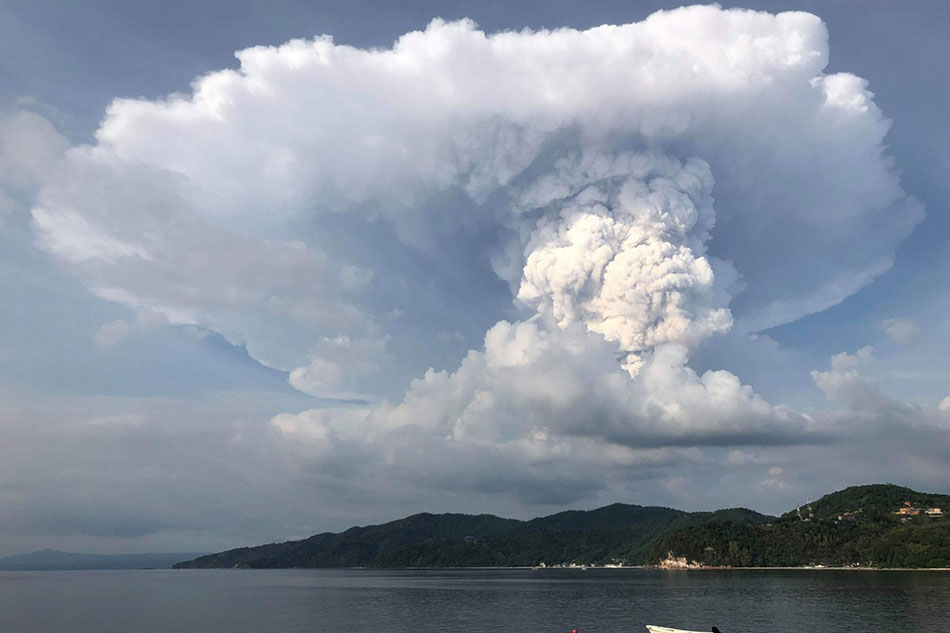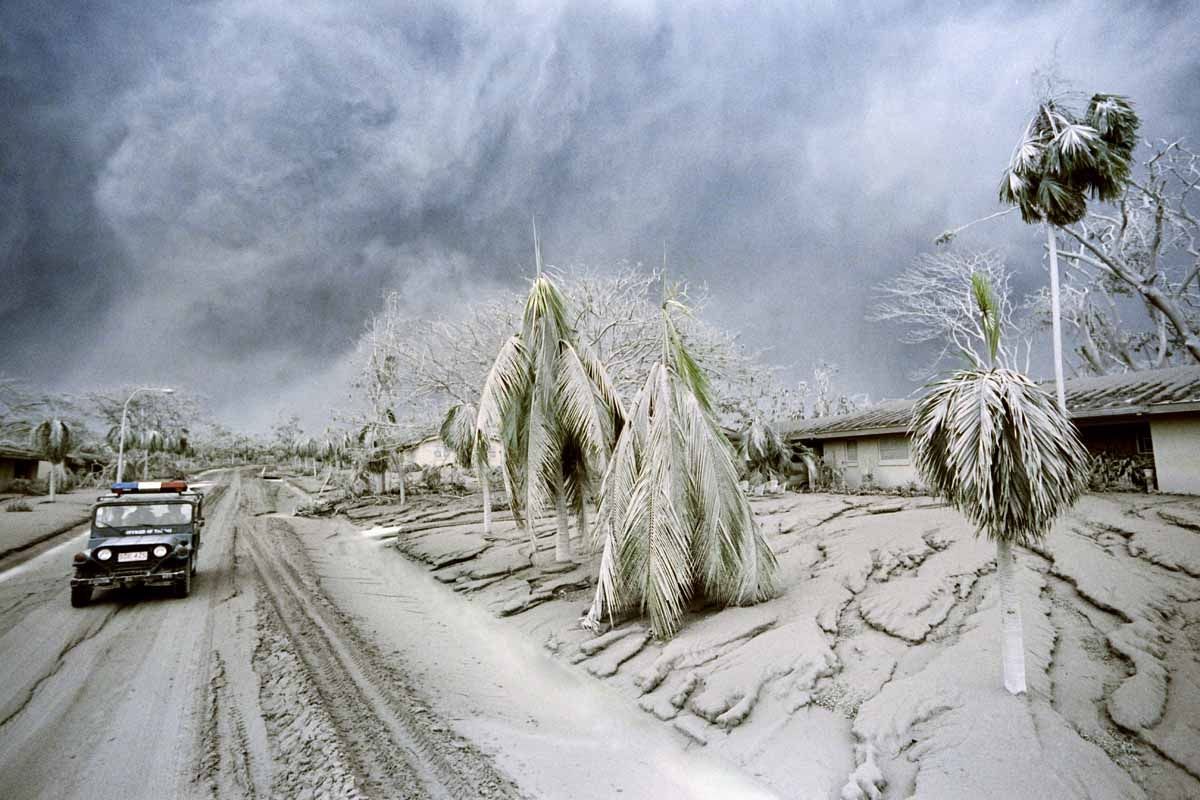Then and Now: Comparing Taal’s Recent Activity vs. Mount Pinatubo’s 1991 Eruption
Jan 13, 2020 • Kyzia Maramara

Jan 13, 2020 • Kyzia Maramara
The destruction thankfully doesn’t even come close. Almost 3 decades since it erupted on June 12, 1991, Mount Pinatubo’s aftermath remains fresh in the minds of Filipinos, especially the ones that witnessed it and suffered from its effects even years later. Now, every time a local volcano shows any signs of activity, Filipinos are drawn back to the horror of that eruption. Taal’s recent activity was a surprise for everyone as the usually dormant volcano, even located near the hottest tourist spots, erupted late afternoon of January 12, 2020.
This is how Pinatubo felt like in ‘91 except we didn’t have Twitter.
— Theodore Te (@TedTe) January 12, 2020
People fear for another Pinatubo-like aftermath since the ashfall has reached north towards cities like Metro Manila, Taguig, and Quezon City. Government experts are even anticipating it to reach far north to Baguio. But what are the differences between the two eruptions and how are we to react from all this news?

Phreatic eruptions occur when cold water beneath the ground or on the surface is heated by magma, lava, hot rocks, or new volcanic deposits. In simple terms, it’s steam coming from a volcano that generates an explosion of water and ash.
The Philippine Institute of Volcanology and Seismology last night raised Taal Volcano’s alert level to Alert Level 4, warning of a possible hazardous eruption. This was after volcanic activity escalated within hours last Sunday prompting the phreatic explosion.

Thousands of people were saved from the Mount Pinatubo eruption because scientists and the local government units were able to evacuate and prepare. Unlike yesterday’s Taal eruption which escalated in a matter of hours, Pinatubo’s volcanic activity took months in between alert levels. When it finally did burst, it became the second-largest volcanic eruption of the 20th century. It took as long as five years for the Philippines to recover.

What makes the Taal eruption dangerous is the fact that there are a lot of people residing near its crater. It’s also located near Tagaytay and Batangas which are known weekend spots for families and barkadas. If this eruption happened during the past holiday where thousands flocked to the area, it would’ve caused even horrible traffic and panic.
As it is, Tagaytay’s local government unit quickly encouraged people to evacuate. Most left the city during the ashfall, the roads were almost on zero-visibility, the rain turned the ash to mud, and people had to buy masks to prevent inhaling the fine ash.
:max_bytes(150000):strip_icc()/eruption-of-mt--pinatubo-NA009065-5c43fb0c46e0fb0001faf5fd.jpg)
Pinatubo’s eruption itself did not kill anyone but the aftermath of it did. Almost 800 died from injuries and collapsed roofs with wet heavy ash. The incoming typhoon then didn’t help with the circumstances. It turned ash into thick heavy mud causing roads to get slippery and sticky. This is why media outlets are encouraging people to sweep their roofs from ash and to perform the appropriate measures of clearing out ashfall in their homes.

People’s Park in Tagaytay City as of January 13, 2020
Taal’s phreatic eruption yesterday spewed ash up to 14 kilometers but its ashfall has reached as far as Manila. Cars in the metro were covered with dust and classes and work were canceled. Fine volcanic ash particles in the air are actually more dangerous than people know. It’s made of minuscule rocks, volcanic glass, minerals, and more that are harmful when humans inhale it. This is why people are in such a panic to buy appropriate face masks that it sold out everywhere.

Four days after Pinatubo erupted, this US Navy base 40km from the volcano is still covered in deep volcanic ash
When Pinatubo erupted (ironically during Independence Day for the Philippines), it sent an ash column 19 kilometers into the air. Days later, on June 15, it exploded once again with an ash cloud that rose 48 kilometers completely blanketing the countryside. Pyroclastic flows, or a mass of hot ash, lava fragments, and gases from a volcano, rolled down the sides of Pinatubo filling valleys with as deep as 600 feet of volcanic deposits.
Helped by the incoming typhoon, Pinatubo’s ashfall traveled to nearby cities such as Manila. Fine ash was even detected as far as the Indian Ocean and was monitored to have traveled several times around the globe even years later.
Taal Volcano's phreatic eruption conjured a cloud of ash that blanketed a town in Talisay, Batangas on Monday. | Video by Walter Bollozos
Posted by Philippine Star on Monday, January 13, 2020
Talisay, Batangas covered in ash on the morning of January 13, 2020
Like it or not, everyone is at the mercy of natural disasters.
For Taal’s eruption, fishermen, businessmen, and even farmers whose livelihood suffered from yesterday’s eruption will take quite a while recover. Photos of Tagaytay’s tourist destinations circled the internet. The once colorful parks now look like something from a black and white movie. Drone shots show trees slumped, heavy with ash, roofs, and roads buried under fine ash, people walking because they can’t use their cars in thick mud anymore. And this isn’t even the climax of Taal’s eruption, scientists are expecting more activity in the coming days.

A US Air Force base near Mount Pinatubo back in 1991
#TaalEruption2020
While y’all seeing the bad side, lemme show you the good one. Humanity is indeed greater than status 🧡 pic.twitter.com/ogXaNKT1Mc— Bea (@itsyogurl_b) January 13, 2020
Thankfully, it looks like Taal isn’t going to follow the footsteps of Pinatubo. The volcano remains at a level of unrest but for now, people are free to rid their houses of ash and clean their cars.
During yesterday’s almost apocalyptic scenario in Tagaytay, all kinds of bayanihan were displayed. Some people took to the streets to spray water on the windshields of ash-laden cars that passed by, some gave away free face masks since almost the entire metro is out of stock, people opened their homes for evacuees and a whole lot more.
Hundreds are still being evacuated from Taal’s vicinity and if you wish to help them, you can donate to foundations like the GMA Kapuso Foundation, University of the Philippines, and Cavite LGU. These organizations accept donations in the form of cash or food, face masks, blankets, drinking water, lights, etc.
Got anything else to add? Share it with us in the comments!
Kyzia spends most of her time capturing the world around her through photos, paragraphs, and playlists. She is constantly on the hunt for the perfect chocolate chip cookie, and a great paperback thriller to pair with it.

Input your search keywords and press Enter.

1 comment